Everyone believes that they have an invention worthy of a Dragons’ Den investment.
Mine is an advent-style calendar that counts down the days until 1 February and the opening of the slurry spreading season.
However, as I write our farm is covered with snow and no great improvement is forecast so it is very unlikely that our tanker will be anywhere near a field at the start of the new month.
Grassland appears to be in reasonable condition. However, grass never looks its best on a drizzly January morning. Silage ground, which was reseeded last year, is developing well and was greatly enhanced by a grazing of breeding ewes belonging to a family friend.
We have found that a reasonable stocking rate of sheep, taken home in early January, encourages grass to tiller and thicken as well as reducing covers so that slurry contamination on the leaf is not an issue.
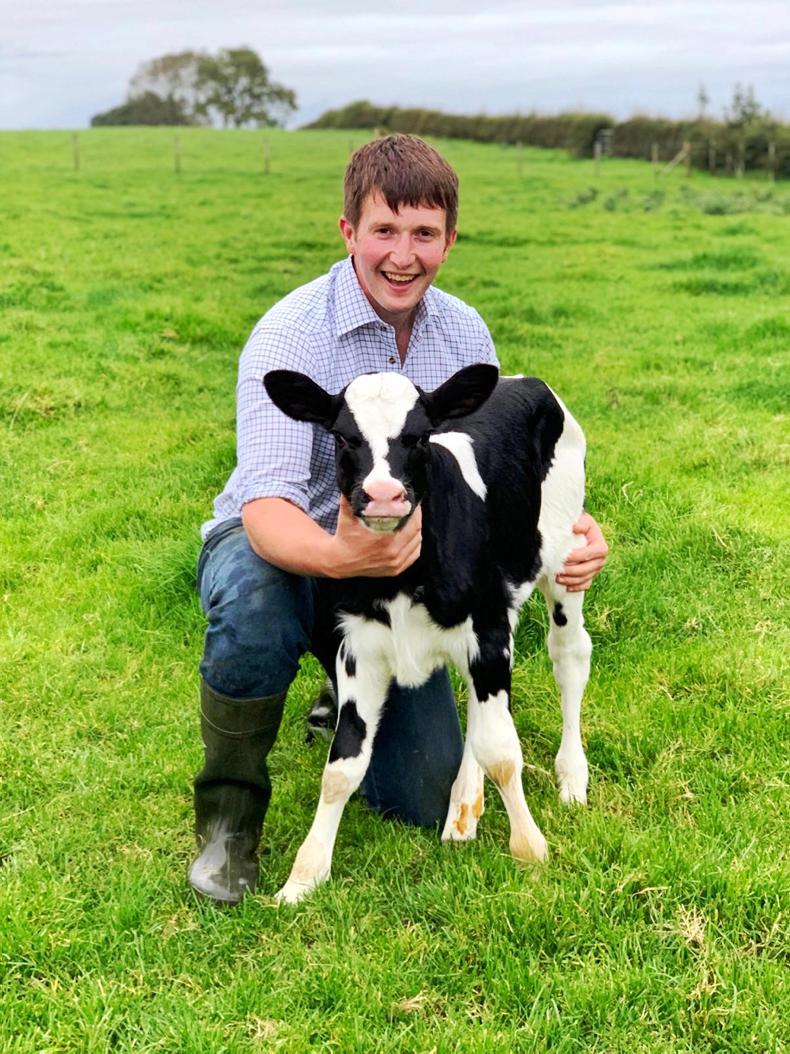
Robert McConaghy with a newborn Holstein heifer calf on his farm in Co. Antrim.
Hectic
After a hectic December in the maternity ward, over 90% of cows have now calved. Much as I love the breed, this year’s intake of Fleckvieh calves have proved particularly hard to train to drink from a bucket.
They approach the bucket in the same way that a Wildebeest approaches a watering hole just after seeing a crocodile burst out of the depths and devouring its mate.
Credit has to go to my calf-rearing and welfare officer (my mother) for managing to educate them.
All remaining cows to calve are in-calf to an Aberdeen Angus sire, which means I am able to say that this is the first year that we have had a 100% heifer rate from Holstein sexed semen.
Since we started using sexed semen in 2008, we have also seen a remarkable increase in conception rates to a point where it compares favourably to that of conventional semen on suitable cows.
However, I have also found to my cost that you have to know where to draw a line and not to persist in squandering sexed straws on a cow just because you would like to get a heifer calf. Not only will this be a waste of money, but it will also extend her calving index.
Some argue that if a cow doesn’t conceive to sexed semen, she isn’t worthy of breeding dairy replacements off, and should only be served with a beef straw. Perhaps they are right.
Looking at the wider agricultural industry at present, market research shows that in the 12 weeks ending 27 December 2020, consumer expenditure on retail beef increased by 12.8% year-on-year.
While some of that is due to closure of the catering and hospitality sector, such a statistic is still incredibly reassuring for all those that love our livestock industry. Thankfully, Veganuary doesn’t seem to have got much traction this year.
The current pandemic has highlighted to the public the importance of good health, and with it a good diet from a sustainable and fully traceable local source. And one good thing to come out of the recent import delays related to the NI Protocol is that it reinforces the need to have a secure local supply of food.
Free milk
One other issue attracting media attention has been the whole fiasco around free school meals.
Perhaps someone from the dairy industry should get on to Marcus Rashford to make him aware of the importance of dairy to a child’s growth and development.
He is the man to persuade the Prime Minister (he seems to be the only person that Boris will take direction from) to bring back free school milk. After all, it was at the Milk Cup where Rashford played some of his first competitive games for Manchester United.
It is essential for the health of the nation that young people are aware of the health benefits of milk consumption, and can access this positive habit from an early age.
Read more
Some stereotypes are more valid than others
Farmer Writes: adding value with a crossbreeding approach
Everyone believes that they have an invention worthy of a Dragons’ Den investment.
Mine is an advent-style calendar that counts down the days until 1 February and the opening of the slurry spreading season.
However, as I write our farm is covered with snow and no great improvement is forecast so it is very unlikely that our tanker will be anywhere near a field at the start of the new month.
Grassland appears to be in reasonable condition. However, grass never looks its best on a drizzly January morning. Silage ground, which was reseeded last year, is developing well and was greatly enhanced by a grazing of breeding ewes belonging to a family friend.
We have found that a reasonable stocking rate of sheep, taken home in early January, encourages grass to tiller and thicken as well as reducing covers so that slurry contamination on the leaf is not an issue.

Robert McConaghy with a newborn Holstein heifer calf on his farm in Co. Antrim.
Hectic
After a hectic December in the maternity ward, over 90% of cows have now calved. Much as I love the breed, this year’s intake of Fleckvieh calves have proved particularly hard to train to drink from a bucket.
They approach the bucket in the same way that a Wildebeest approaches a watering hole just after seeing a crocodile burst out of the depths and devouring its mate.
Credit has to go to my calf-rearing and welfare officer (my mother) for managing to educate them.
All remaining cows to calve are in-calf to an Aberdeen Angus sire, which means I am able to say that this is the first year that we have had a 100% heifer rate from Holstein sexed semen.
Since we started using sexed semen in 2008, we have also seen a remarkable increase in conception rates to a point where it compares favourably to that of conventional semen on suitable cows.
However, I have also found to my cost that you have to know where to draw a line and not to persist in squandering sexed straws on a cow just because you would like to get a heifer calf. Not only will this be a waste of money, but it will also extend her calving index.
Some argue that if a cow doesn’t conceive to sexed semen, she isn’t worthy of breeding dairy replacements off, and should only be served with a beef straw. Perhaps they are right.
Looking at the wider agricultural industry at present, market research shows that in the 12 weeks ending 27 December 2020, consumer expenditure on retail beef increased by 12.8% year-on-year.
While some of that is due to closure of the catering and hospitality sector, such a statistic is still incredibly reassuring for all those that love our livestock industry. Thankfully, Veganuary doesn’t seem to have got much traction this year.
The current pandemic has highlighted to the public the importance of good health, and with it a good diet from a sustainable and fully traceable local source. And one good thing to come out of the recent import delays related to the NI Protocol is that it reinforces the need to have a secure local supply of food.
Free milk
One other issue attracting media attention has been the whole fiasco around free school meals.
Perhaps someone from the dairy industry should get on to Marcus Rashford to make him aware of the importance of dairy to a child’s growth and development.
He is the man to persuade the Prime Minister (he seems to be the only person that Boris will take direction from) to bring back free school milk. After all, it was at the Milk Cup where Rashford played some of his first competitive games for Manchester United.
It is essential for the health of the nation that young people are aware of the health benefits of milk consumption, and can access this positive habit from an early age.
Read more
Some stereotypes are more valid than others
Farmer Writes: adding value with a crossbreeding approach





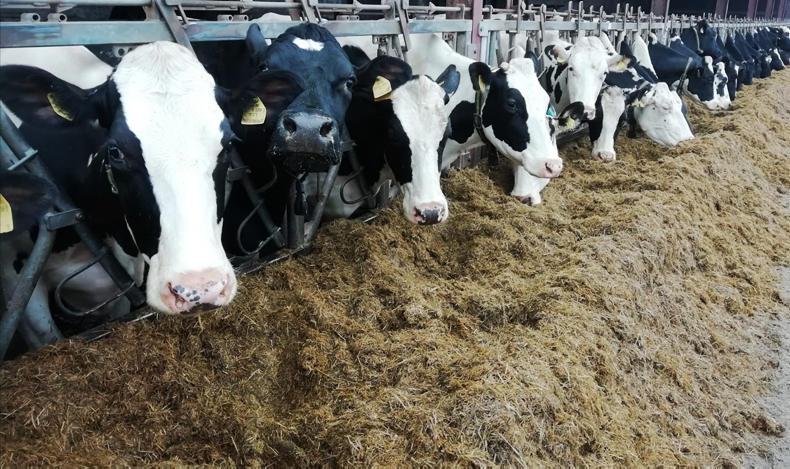
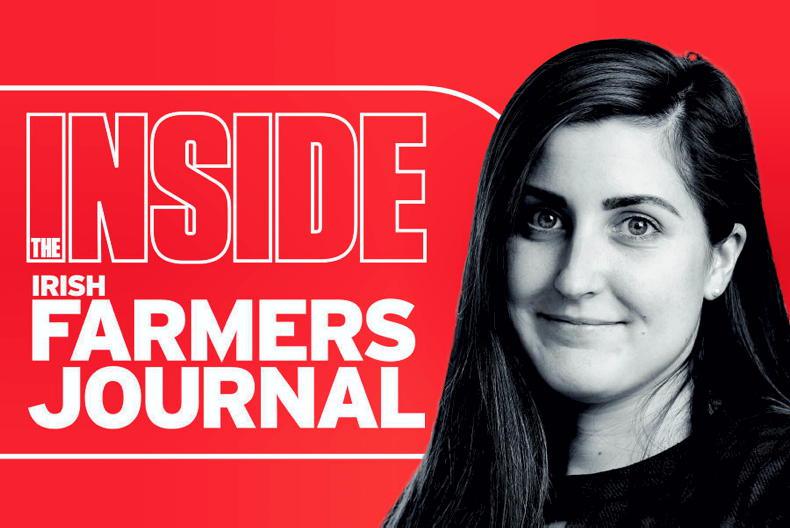
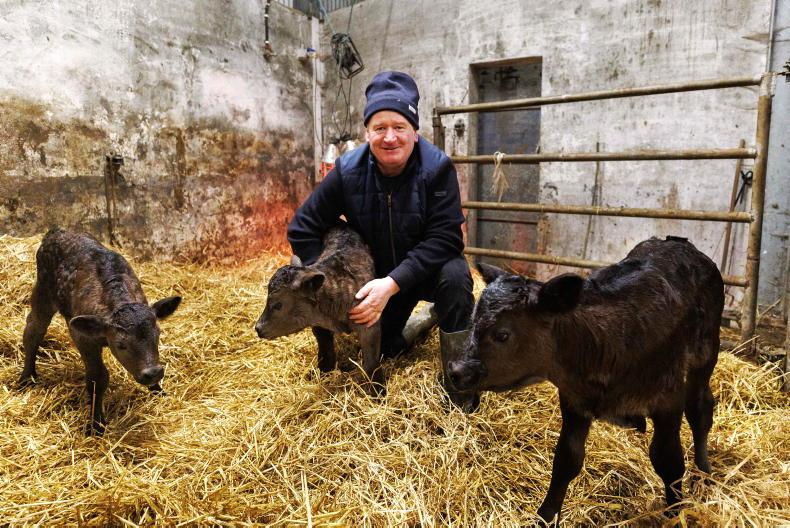
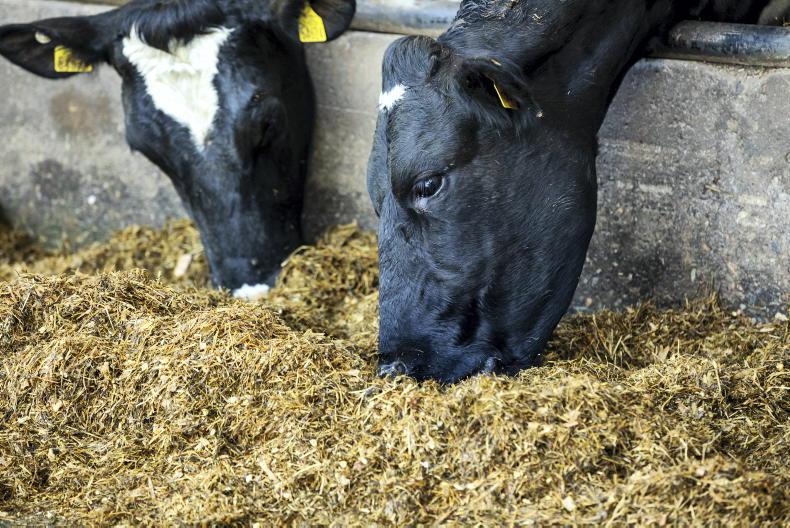

SHARING OPTIONS